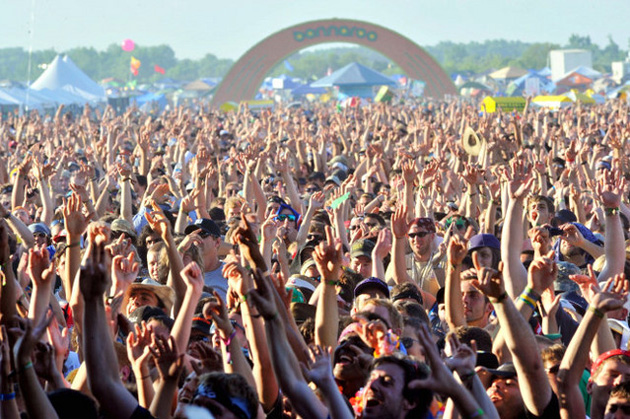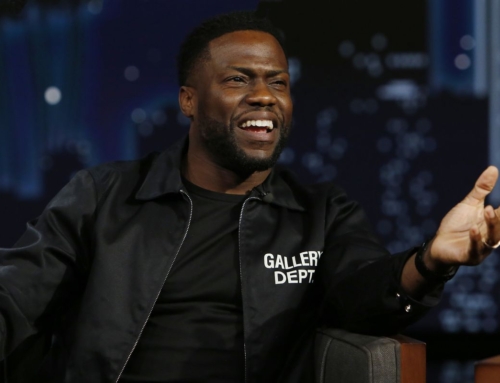 New Coke, new rock: Some things are better left alone, and some music disparate genres better not compared. In July, music writer Jonathan Bogart claimed EDM is the new rock in an editorial for The Atlantic, while in August, Korn frontman Jonathan Davis stated to Spinner that “North American dubstep is the electronic heavy metal.”
New Coke, new rock: Some things are better left alone, and some music disparate genres better not compared. In July, music writer Jonathan Bogart claimed EDM is the new rock in an editorial for The Atlantic, while in August, Korn frontman Jonathan Davis stated to Spinner that “North American dubstep is the electronic heavy metal.”
In terms of sound, dubstep, particularly the “brostep” variety pushed by Skrillex, might be preferable to any metal that hit the airwaves over the past 10 years and certainly captures the abrasive character and chaos of an older Metallica record. Skrillex producing the nu-metal purveyors’ 10th studio album The Path of Totality was a perfect sonic match, and should dubstep stick around the States beyond being the novelty-of-the-moment that it is, Skrillex could revive the rock genre from its nu-metal nadir.
Bogart, on the other hand, explains in his piece that EDM is being received like all new genres throughout the 20th century, be it jazz in the 1920s, rock and roll in the 1950s, and hip-hop in the ‘80s and ‘90s. With that argument, however, why aim straight for rock? How is EDM’s general perception of just-push-play music making and ecstasy-fueled nights out any different from other past pearl-clutchings? Unlike the others, however, EDM’s stateside reception has come in waves: disco in the ‘70s, less mainstream synth-pop, Detroit techno, and Chicago house in the ‘80s, and electronica and raves in the ‘90s. None of them managed to stick, and each incarnation is met with similar statements about laziness and drug-taking.
As much as promoters and ticket sellers like Live Nation are clamoring after EDM, record and concert sales show that, while the genre is catching up, it has a long way to go to surpass or even reach rock, whose profile on the Billboard charts has been falling since the 1990s to pop, hip-hop, and even country.
Based on Billboard’s Year End charts for 2011, the only EDM artists – excluding pop acts who incorporate house beats – to break were Daft Punk (their Tron: Legacy soundtrack made the Billboard 200 Albums for the year and they were listed as a Billboard 200 Artist), David Guetta (for singles “Without You” and “Where Them Girls At” on the Hot 100 songs and as a Hot 100 Artist), Deadmau5 (for album 4×4=12), and Afrojack (at #86 on the Hot 100 Artists list). As these Billboard year-end lists show, listeners still only prefer their EDM with a large side of pop.

Compare this to the various listings in 2011 for Maroon 5, Foster the People, OneRepublic, Hot Chelle Rae, Gym Class Heroes, Mumford & Sons, Coldplay, Foo Fighters, Florence + The Machine, Train, Red Hot Chili Peppers, Kings of Leon, Bon Iver, Linkin Park, My Chemical Romance, The Decemberists, and Arcade Fire. Although these rock acts, too, are cursed by the preference of pop, their presence symbolizes their genre’s strength; EDM, on the other hand, gives off a novelty or luck vibe.
But, what about the internet aspect? Bogart discusses the fact that EDM is still perpetuated by the internet: artists quickly put out singles or digital releases, and physical records are more difficult to come by. Digital Songs and Social 50 continue to reflect novelty status, with Skrillex and pop-crossovers David Guetta and Calvin Harris being the only three to rank for the week of August 25.
EDM festival attendance in the U.S. has been rapidly growing, with Electric Daisy Carnival bringing in 250,000 concertgoersover the course of three days. While this figure is certainly impressive for EDM in the U.S., consider it on a global scale: the rock-dominating Glastonbury draws 175,000 people per day, and South American rock event Rock Al Parque 266,000 over three days. Domestically, on the other hand, Electric Daisy is on par with Coachella – covering nearly all genres – and Burning Man, and surpasses Bonnaroo (drawing about 80,000 concertgoers total). Electric Daisy, in a single day in 2010, drew 100,000.
The chasm between EDM and rock artists’ individual tours is far vast. Classic rock acts, even without releasing a new album, brought in more money and concertgoers than even chart-topping pop acts did in 2011. Even with higher record sales and profiles, Swedish House Mafia doing a stint at Madison Square Garden and Avicii playing Radio City Music Hall are still big deals.




